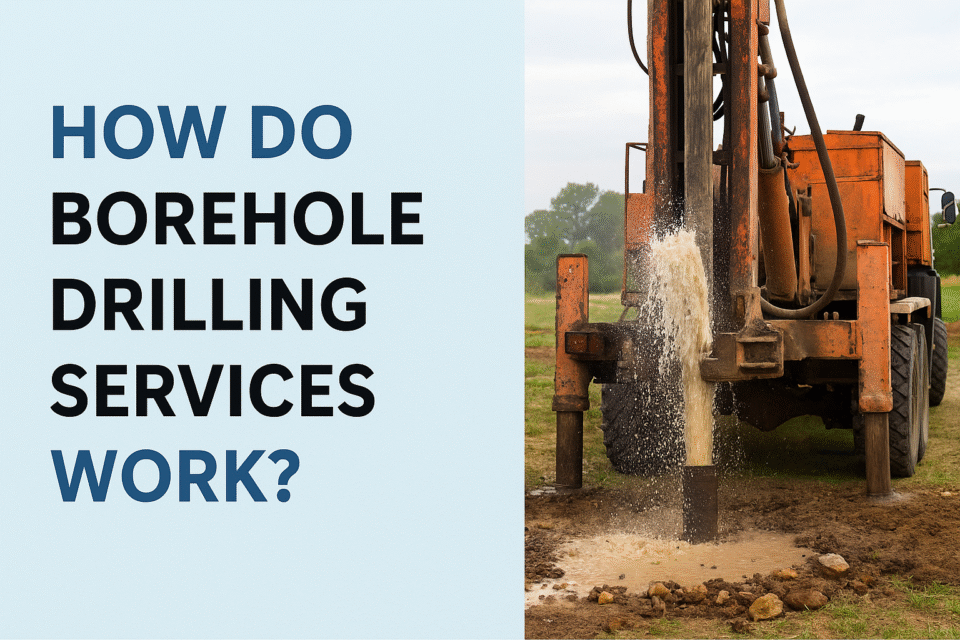Last Updated on May 28, 2025 by Admin
There are any number of reasons why you might choose to get a borehole drilled. Whatever they are, the process behind getting one drilled often sounds more complicated than it actually is in practice. Still, it’s not a process that most people are familiar with if they haven’t been involved in the planning before. With that in mind, let’s take a quick look at how borehole drilling services work.
Table of Contents
A quick definition
A borehole is basically a deep, narrow shaft drilled into the ground, generally to access water from underground sources. It’s commonly used in rural areas, farms, large estates, factories – anywhere that needs a private water supply or where mains access simply isn’t viable. But even in suburban settings, more people are turning to boreholes as a long-term solution to rising water costs.
What happens before drilling starts?
The process doesn’t begin with a big noisy rig showing up in your driveway. It starts with a proper survey. A drilling company will usually assess your site to understand the geology – what kind of soil or rock you’re dealing with, how deep the water table is, and whether the location is viable. This might include desk-based research, but often also a visit.
They’ll also look into environmental considerations, local regulations, and whether any permissions are needed. If you’ve got underground utilities nearby, those need mapping out too.
The drilling itself
Once the green light’s given, a rig from a provider like Teckna Group rolls in. The drill bores down, metre by metre, through soil, clay, rock – whatever’s there – until it reaches the aquifer. Depth varies, depending on your location. In some parts of the UK, you might hit water at 30 metres. In others, you could be going down 100 or more.
Steel casing is inserted as the hole is drilled, keeping the structure stable and protecting the water from contamination. After that, a special screen gets fitted at the bottom to allow water through while blocking out sand and debris.
Getting the water up
Once you’re into the water-bearing layer, a submersible pump is installed. This is what pulls the water to the surface. It’s usually controlled via an automatic switch or pressure system, and can be connected directly to your internal plumbing – or into a tank if you’re storing it for irrigation or livestock.
The team will test the flow rate to make sure you’re getting enough water per hour. They’ll also check the quality, especially important if the water’s being used for drinking or food prep. If it needs filtering, that can be sorted at the same time.
What about maintenance?
Boreholes do need occasional checks. Pumps can wear out over time, and iron or limescale build-up can affect flow. A basic service every year usually keeps things ticking along nicely. Leave it too long and you could end up with blockages – or worse, a failed pump just when you need it.
Installing and maintaining a borehole isn’t generally too difficult, so long as you use the right service providers. Make sure you do your due diligence before choosing one, and you should be able to get things right in the end.
Related Posts
- Different Types of Mini Piling and the Benefits It Can Provide
- What is Core Drilling?
- Job Titles in the Oil and Gas Industry: A Comprehensive Guide for 2024
- Careers in the Oil and Gas Industry [Ultimate Career Guide 2025]
- Essential Tools for Plumbers: A Complete Guide


